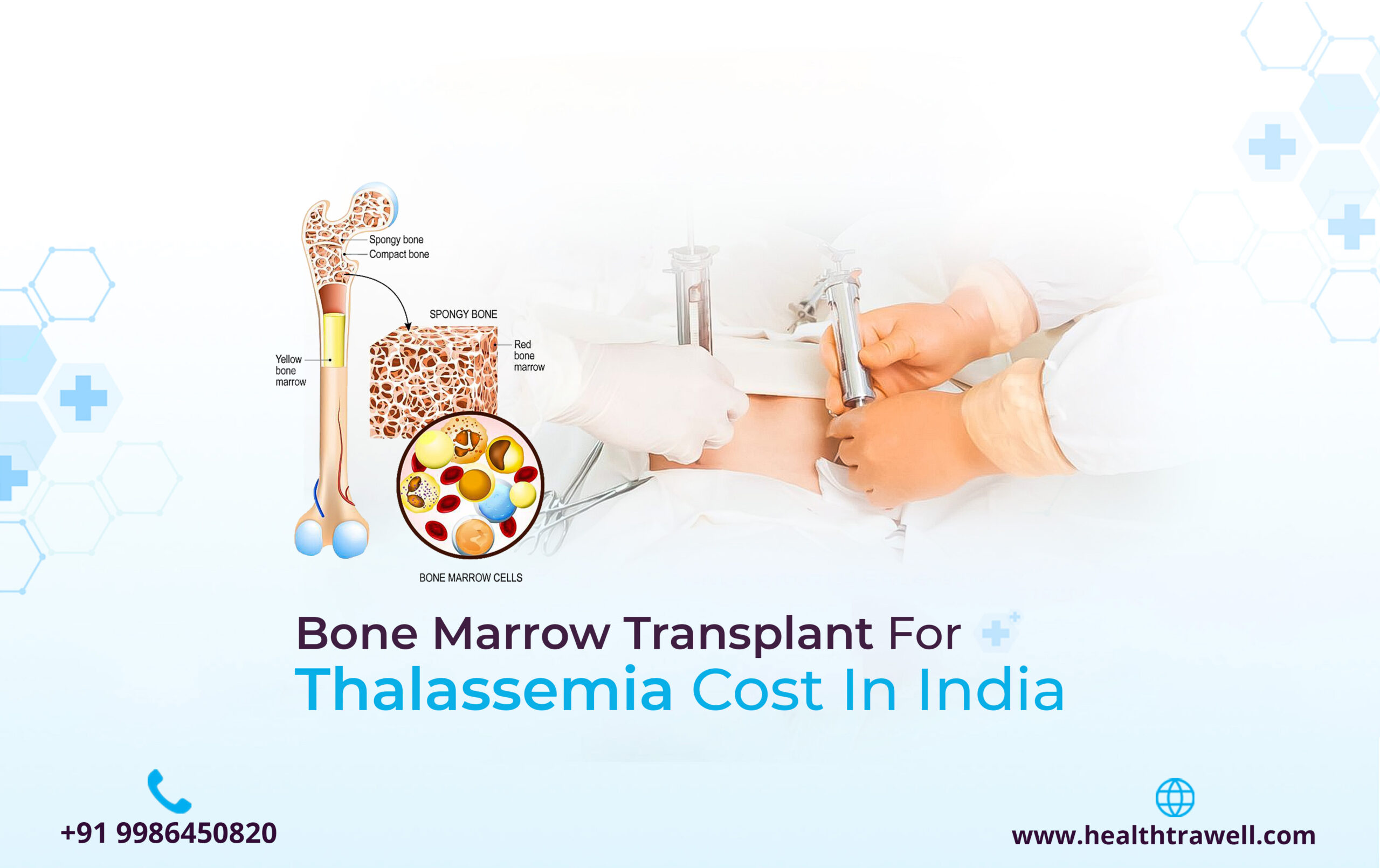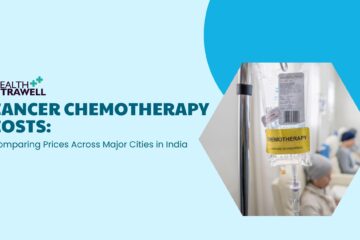Bone Marrow Transplant for Thalassemia Cost in India

Bone Marrow Transplant for Thalassemia Cost in India Compared to Other Developed Countries
Bone Marrow Transplant for Thalassemia Is a Life-Saving Procedure!
Thalassemia happens to be a genetic blood disorder that is usually characterized by abnormal haemoglobin production. Haemoglobin happens to be the protein that is responsible for carrying oxygen in the RBCs or red-blood-cells. It is a serious condition that can lead to severe anemia and various complications. While there are different treatment options available for thalassemia, a bone marrow transplant (BMT) stands out as a potential cure for this condition. Let us explore the details of this procedure, its benefits, and associated considerations. We will also talk about the bone marrow transplant for thalassemia cost in India in comparison to other developed nations.
When Is It Performed?
Bone marrow transplant is typically considered for patients with severe thalassemia who have significant symptoms and require regular blood transfusions to manage their condition. The procedure aims to replace the faulty bone marrow cells responsible for the abnormal production of haemoglobin with healthy ones. By doing so, it provides the patient with a new source of healthy blood cells that can function normally.
Who Performs It?
Bone marrow transplants are complex procedures that require a specialized team of medical professionals. Haematologists, oncologists, transplant surgeons, and other healthcare experts work together to carry out the transplantation process. These professionals have expertise in assessing patients for transplant eligibility, finding suitable donors, conducting the procedure, and providing post-procedure care.
Preparing for the Procedure
Before undergoing a bone marrow transplant, thorough preparation is essential to ensure the best possible outcomes.
Types of Transplants
Two types of transplants are commonly performed for thalassemia:
- Autologous Transplants – Using a Person’s Stem Cells: In autologous transplants, a person’s own stem cells are collected, stored, and later infused back into their body following high-dose chemotherapy. This procedure allows the individual to receive their own healthy cells, minimizing the risk of rejection.
- Allogeneic Transplants – Using Donor’s Stem Cells: Allogeneic transplants involve using stem cells obtained from a compatible donor, such as a sibling or unrelated matched donor. The donor’s stem cells are transplanted into the thalassemia patient after they receive conditioning chemotherapy to prepare their body for the transplant.
Diagnosing Thalassemia
Accurate diagnosis of thalassemia is crucial before considering a bone marrow transplant. Thalassemia is typically diagnosed through blood tests that measure the level of haemoglobin and identify specific genetic mutations. Additionally, other tests, such as iron studies, DNA analysis, and bone marrow biopsy, may be performed to determine the severity of the condition and the need for a transplant.
How Is the Procedure Performed?
The procedure usually involves the following steps:
- Conditioning: Before the transplant, the patient undergoes conditioning, which involves receiving high-dose chemotherapy and/or radiation therapy. This aims to eliminate the diseased cells and create space in the bone marrow for the new, healthy cells.
- Stem Cell Transplantation: After the conditioning phase, the patient receives the transplanted stem cells, either from their own stored cells (autologous transplant) or from a donor (allogeneic transplant). The stem cells are infused intravenously, similar to a blood transfusion.
- Engraftment: After the transplantation is done, the infused stem cells are then made to make their way to the bone marrow & then start with the production of healthy blood cells. This process is known as engraftment and typically takes a few weeks.
What to Expect after the Procedure Is Performed?
The recovery period after a bone marrow transplant can be challenging. The patient will require close monitoring and supportive care, including blood transfusions, antibiotics, and medications to manage potential side effects and prevent complications. The recovery time can vary depending on individual factors, but it generally takes several months for the immune system to fully recover.
Side-Effects
Bone marrow transplant can cause various side effects, including:
- Graft-versus-Host Disease (GVHD): In allogeneic transplants, there is a risk of GVHD, a condition in which the transplanted cells attack the recipient’s healthy tissues. This can lead to skin rashes, liver dysfunction, and gastrointestinal problems.
- Infections: During the recovery phase, the weakened immune system is susceptible to infections. Patients may receive prophylactic medications and require strict infection control measures.
- Gastrointestinal Issues: The high-dose chemotherapy and radiation therapy can cause gastrointestinal side effects, such as nausea, vomiting, diarrhoea, and mouth sores.
- Other Issues: Some other issues may include nausea, headaches, pain, chills, shortness of breath, fever, pain and dropped blood pressure levels.
Complications
While bone marrow transplant can be lifesaving, it also carries some risks and potential complications. These can include organ damage, infertility, early menopause, bleeding in lungs, bleeding in brain, bleeding in other body parts, hormonal imbalances, damage caused to vital organs of the body, cataract issue in the eyes with clouding of the eye lens, lung problems, anaemia, infections, nausea, vomiting, diarrhoea, inflammation & soreness in the mouth, graft failure, and complications related to GVHD. However, with advances in medical technology and improved supportive care, the risks and complications have significantly reduced over time.
Care Needed after the Procedure
After a bone marrow transplant, long-term follow-up care is necessary. Patients will require regular check-ups, blood tests, and monitoring to assess their recovery, manage potential complications, and ensure the success of the transplant. Medications, such as immunosuppressants and antibiotics, may be prescribed to prevent infections and manage GVHD. Patients also need to avoid excess iron consumption, eat a healthy well-balanced diet regularly, and also avoid any sort of infections.
Bone Marrow Transplant for Thalassemia Cost in India Compared to Other Developed Countries
Bone marrow transplant for thalassemia cost can vary depending on several factors, including the country, medical facility, type of transplant, and post-procedure care required. In general, the cost of this procedure in India is comparatively lower than in many developed countries, making it an attractive destination for medical tourism.
Health Trawell in India Can Assist You Well
In conclusion, bone marrow transplant offers hope for individuals with severe thalassemia, providing a potential cure and improving their quality of life. While the procedure has its challenges & associated risks, advancements in medical science continue to improve outcomes and reduce complications. Proper diagnosis, thorough preparation, and comprehensive post-procedure care are crucial elements in ensuring the success of a bone marrow transplant for thalassemia patients. You can always get in touch with the helpful & affable team of Health Trawell to get the best treatment here in India at the best cost.



